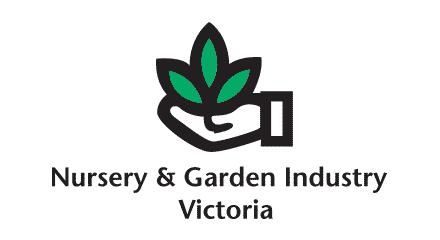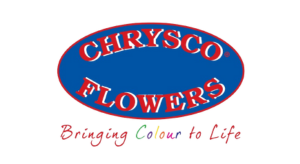10 REASONS TO LOVE ROSÉS
10 REASONS TO LOVE ROSES…
OOPS, THAT’S ROSÉ, NOT ROSES, BUT WE DO LOVE THEM TOO!
Versatile, refreshing and absolutely delicious, there is so much to love about Rosé!
Come and learn more about this delectable and super-popular wine style with Wine Selectors, who are offering complimentary wine tastings during the Melbourne International Flower and Garden Show at their cellar door stands!
A style of wine rather than a variety, Rosé has come a long way since those sickly-sweet wines of yesteryear to emerge as an anytime, anywhere, food-friendly treat. Australian Rosé is now decidedly dry, savoury and textural and its easy-drinking nature makes it a perfect match to our laidback lifestyle.
So what is special about Rosé? Here are our top 12 reasons to put Rosé in your wine glass!
1. AUSTRALIA MAKES WORLD-CLASS ROSÉS
Australia is producing some absolutely top-notch Rosés that give the European drops a run for their money. Today, Aussie winemakers are experimenting with different techniques and grape varieties in order to make more complex and multi-layered Rosés.
“Up until fairly recently, Australian winemakers made Rosé as an after-thought,” says Wine Selectors Tasting Panellist Adam Walls. “Whereas now, the wines are being made deliberately, with designated parcels of fruit that have been picked specifically to be turned into Rosé.”
2. ROSÉ IS A WINE FOR ALL SEASONS
Whether you’re soaking up the spring sunshine, escaping the summer heat, or cosying up in front of the fire, Rosé is a wine for all seasons.
3. ROSÉS ARE INCREDIBLY FOOD-FRIENDLY
From fresh salads, seafood, antipasto and tapas, to a seriously good steak, Rosé pairs well with a huge range of food styles and dishes.
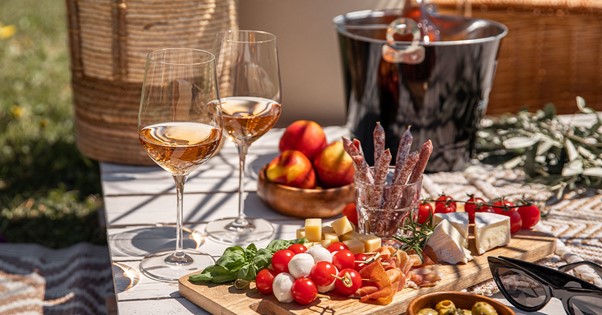
4. ROSÉ LOVES TO CHILL OUT
Neither red nor white, Rosé is essentially a pink wine made from red grapes, with minimal skin contact, in the style of a white wine. Like most white wines, Rosés are best served chilled.
5. ROSÉS ARE PALATE PLEASERS
While most Australian Rosé is made in a dry style, there are off-dry and sweeter examples, so there is a Rosé to suit every palate. Pinot Noir-based Rosé can be depended on to deliver good quality with soft, easy characteristics of plums, spice and an array of savoury fruits. Sangiovese typically produces drier styles of Rosé, with savoury cherry flavours. Cabernet Rosés offers bright berry flavours, often with a leafy, herby edge. Grenache-based Rosé has emerged; these wines tend to be sweeter and fuller and offer a vast array of berry-based fruit flavours.
6. THERE IS NO NEED TO CELLAR ROSÉ
What’s also great about this joyous drop, is that Rosé is a ‘drink now’ style and doesn’t need to be cellared. That means there is no wait time and you can enjoy these blushing beauties soon after release.
7. ROSÉ IS AN ALTERNATIVE TO WHITES AND REDS
Rosé’s reputation has soared, not to mention its suitability to match the Australian climate, as it makes a great alternative to a chilled white or a lighter-bodied red. It also provides a great segue from drinking whites and moving into reds.
8. NO TWO ROSÉS TASTE THE SAME
Given how many different varieties can be used to make Rosé, no two wines taste the same, so there is always something new to explore and enjoy. While they’re usually made in the same way, the biggest differences are the variety, where it comes from, residual sugar and alcohol level.
9. ROSÉS TAKE YOU FROM BRUNCH AND LUNCH TO DINNER AND DESSERT
The vast range of Rosé flavour profiles plus its relatively low alcohol content makes it a wine to be enjoyed day or night. From brunch and lunch to dinner and dessert, Rosé has every situation or celebration covered.
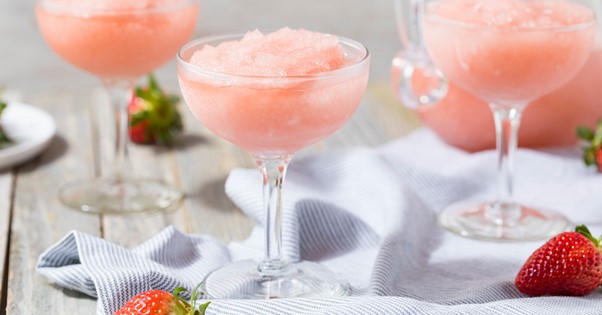
10. ROSÉ IS DELICIOUS
No further explanation is needed!
Come and learn more about the reasons to love Rosé with Wine Selectors, offering complimentary tastings at the show!
Emmaline Bowman & Liam Riley – Pocket Profile
We are thrilled to announce that Emmaline Bowman, the owner of STEM Landscape Architecture & Design and Liam Riley, of ID Landscaping Design & Construction, will be joining us at the 2024 Melbourne International Flower and Garden Show presented by Scotts within the Landscape Show Garden Competition!
The pair took us through their Show Garden Design “Through the looking glass”, aswell as what’s inspired them to work within the industry, their favourite trends and what they can’t wait to see at this years #melbflowershow!
Show Garden Profile – “Through the looking glass”
“Through the Looking Glass” extends an invitation to explore the concealed ecosystems beneath our feet. The intricately woven layers below the surface serve as the life force sustaining flourishing ecosystems. Our objective is to dissolve boundaries through the ‘looking glass windows,’ revealing the pivotal role of living organisms, soil, and water in nurturing microsystems. While most life below remains hidden, we highlight visible activities such as soil-living insects, mycorrhizal networks, and water-purifying bacteria.
Our installation, inspired by a rural Australian theme, blurs the line between visible and unseen, emphasizing the importance of subterranean activities for a healthy environment. The silent choreographer of this masterpiece is the health of the soil and water, showcased in the pond and encouraged by locally sourced materials like boulders, pebbles, logs, and aquatic plants. This design aims to exemplify a minimal impact style space, serving as both an aesthetic attraction and an essential wildlife habitat.
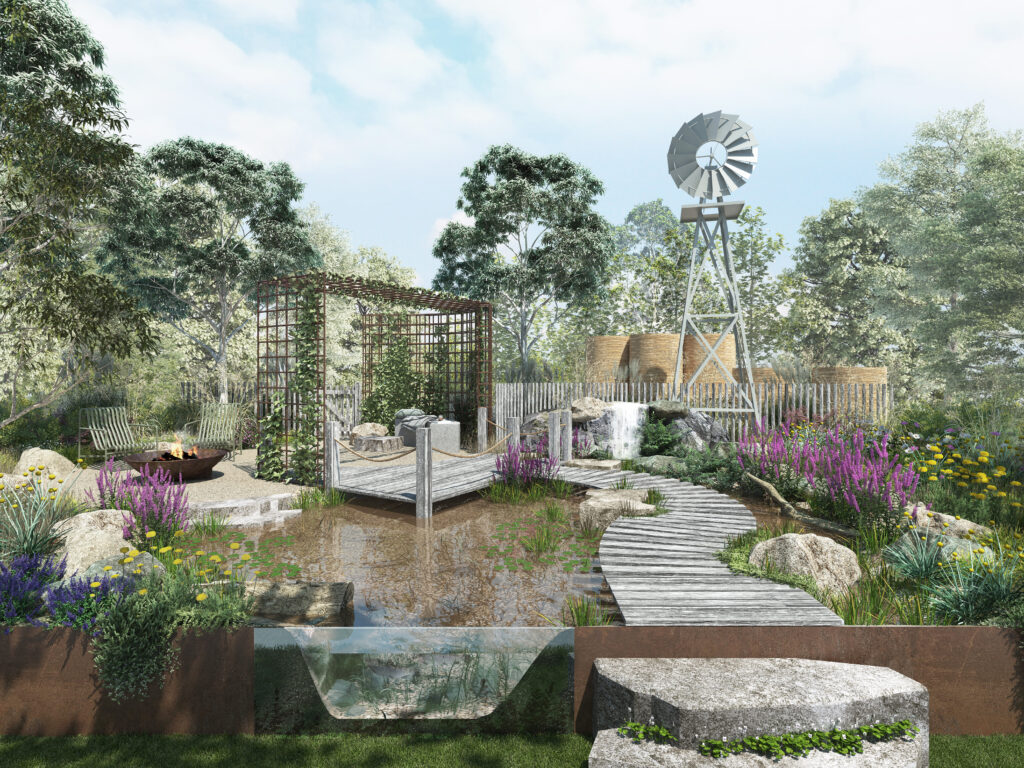
“Through the Looking Glass” extends an invitation to explore the concealed ecosystems beneath our feet. The intricately woven layers below the surface serve as the life force sustaining flourishing ecosystems.
EMMALINE BOWMAN – Show Gardener Profile

When/How did you get into the industry?
I’ve always had an interest in wildlife and the environment so after high school I moved to Melbourne to study Biosciences and Zoology at Latrobe University but with my artistic side I wanted a more creative role within the field so I ended transfering into Landscape Architecture, & finishing a Masters Degree in Landscape Architecture in 2013. During my final year at high school and in University I worked at an aquarium and also had my own business maintaining fish tanks and planting ponds as I always had a fascination with water environments. After Graduating I got my first role at Green & Dale Associates, a Landscape Architecture firm specializing in zoological design. I then worked with Phillip Withers and then started STEM in 2018.
What are you most excited about at this year’s #melbflower show?
I have heard there is a bit more of a focus on
Australian native plants and naturalistic gardens. I am always excited to see what people develop within this area, I also
love seeing the different styles people come up with as well.
What is the gardening trend of the season?
I think meadow gardens, habitat gardens and Australian plants are the
trend at the moment.
Who has been the biggest influence on your design career?
My main influence in design is observing different ecosystems and what makes them work, or not work.
If you could invite any three people to a garden party who would they be?
David Attenborough, Jane Goodall & Dr Harry Cooper.
LIAM RILEY – Show Gardener Profile

When/How did you get into the industry?
I was in year 9 at school looking for pocket money so decided to post flyers in
the neighbors letterboxes to see if anyone needed lawns mowed, gutters cleaned or a general hand around the garden.
Things progressed from there eventually meeting my future business partner. My parents were also very keen gardeners
with a few acres in Warrandyte to manage.
What are you most excited about at this year’s #melbflower show?
See all the wonderful show gardens and other displays and appreciate all the hard work that goes into them and meeting the designers/builders and making new industry friends – such a good time for you!!
What is the gardening trend of the season?
Not sure I really follow trends!! This year we have a few garden and environmental messages we are pushing to improve the industry so let’s hope this becomes a trend.
Who has been the biggest influence on your design career?
The natural environment! Sounds corny but true – it’s very hard to mimic nature and make it look like it was always there so that’s the challenge.
If you could invite any three people to a garden party who would they be?
I’ve invited my family and that’s it – we have a large family… that’s enough!
Get the Most Out of Your Apple & Stonefruit Trees at Home
It’s a process that appears so simple – buy a fruit tree, plant it, and you’ll grow gorgeous fruit. But as most avid gardeners will know, that’s not the case. Growing fruit is a year-round marathon. It requires patience as you carry out certain activities in a particular order and at specific times while protecting your fruit from predators.
With an apple tree, for example:
- In winter, you need to prune the tree: Pruning will remove dead or diseased branches and ensure there’s space on the tree for high-quality fruit to grow, especially on healthy branches.
- In spring, you need to thin the fruit off the tree: Thinning allows for fruit to grow to its best size and quality. When a tree isn’t thinned, fruit can grow overcrowded, resulting in it being smaller and of lower quality. Thinning also allows for more sunlight and air penetration, which is beneficial for even ripening.
- In summer, you need to protect the tree: As flowers turn into fruit, there come pests, such as birds and possums, eager for their share. The best way to protect your tree is to cover it with secure netting. As a recommendation, netting should have a mesh size of 5mm x 5mm or less at full stretch, and should be white in colour, so that nocturnal animals can see and avoid the tree at night. There’s a range of options available, from netting the entire tree, to netting individual branches or even fruit pieces with bags and sleeves.
- In autumn, you need to pick the fruit: March to June is generally harvest season for apples, except for some early season varieties, such as SweeTango®. You’ll know an apple is ready to be picked when its foreground colour is vibrant, the flesh is a white or cream colour and the seeds have all turned brown. Unfortunately, the only way to know for sure is to pick a sample and cut it in half!!
Preparation is essential
Before you carry out the above seasonal activities, you need to prepare; specifically in terms of soil and location in your garden. For example, to grow fruit, you must plant your tree in the sun. This is especially true for apples and stonefruit, as they require full sunlight to grow and taste their best. Once you’ve chosen a spick-and-speck, sunny spot in your garden, next find soil that’s not so flash or nutrient-rich. You don’t need top-tier soil to grow top-tier fruit. In fact, if the soil is too good, the tree may grow very big, very fast, but won’t produce much or any fruit.
Another prep tip – for bare rooted trees – is to plant in winter when the tree has no leaves. This will avoid shocking the tree by transplanting it when it is actively growing. A dormant tree will slowly wake up from its winter slumber when the soil temperature increases in spring.
Stonefruit will begin harvest in summer from around December to March, and apples in autumn from around March to June. Which means if you’re planting in July, for example, no fruit will grow the following summer or autumn, giving you time to establish the tree. Come year two, you may see a few fruit pieces growing, but the tree will still be establishing itself. By year three, or the ‘third leaf’, you should expect to see the fruits of your labor.
What might prevent fruit from growing its best?
Lack of pollination: Pollination is an essential step. This is the process which turns blossoms into fruit, where pollinators, such as bees, collect and transfer the pollen grain from the male part of the flower, the stamen, to the female part, the stigma. However, if there’s not enough pollen, your tree won’t produce any fruit. That’s where having at least two trees planted near each other can help. This is specifically the case for apples, pears and plums, which all require pollinating partners. However, nectarines, peaches, and even citrus trees, are generally ‘self-fertile’, meaning they don’t need pollen from another source.
Disease: The most common diseases in fruit trees are curly leaves in stonefruit, and black spot or mildew in apples. If your tree’s leaf health is poor, it won’t grow good fruit or any at all. To manage disease, stay alert to your fruit tree drying out and watch for indications of disease so you can act quick. For example, one way to control fungal, which causes fruit to decay and turn soft and brown, is by using a copper fungicide, an element which will help prevent disease.
Having too much fruit on the tree: The reason fruit trees grow fruit is to reproduce, so it naturally wants to grow in abundance. However, if you leave all fruit on the tree, then it’ll only grow to the size of a ten-cent coin. This is where the importance of thinning comes in, so that the tree can carry the amount of fruit it’s capable of carrying. A good rule of thumb is that the circumference or diameter of the trunk will usually dictate how many pieces of fruit should be kept on the tree.
The most important thing to remember: Growing a fruit tree is easy. Really, you don’t have to do anything but put it in the ground. But growing fruit on the fruit tree requires time and work in each season. Although, it’s always worth it in the end, for that first season when you finally see beautiful fruit growing in your own garden!!!!
Learn more about growing fruit at home from Montague’s Chief Innovation Officer, Rowan Little, and Andrew Smith, expert at Warners Nurseries. Running at the Melbourne International Flower & Garden Show, these workshops will cover:
- How to establish your garden: plant selection, soil preparation & maintenance
- Planning for small and compact gardens
- Dealing with pests & disease
- Ensuring your garden grows exceptional fruit for years to come
Reserve your free ticket here.
TOP FIVE WAYS TO TACKLE THOSE PESKY INDOOR PLANT PESTS
Indoor plants are the perfect space fillers and will never fail to add that extra pop of colour to the Aussie home. However, despite being indoors and like all plants, indoor varieties aren’t immune to those irritating plant pests.
Narelle Peart from Scotts Osmocote says: “Indoor plants are just as much of a target for common plant pests and this is something many plant parents forget. Just because you spot a free-loading bug, however, doesn’t mean all hope is lost as there are plenty of ways to treat them.”
For those looking to keep their plants happy, healthy and pest free, Narelle has compiled her top five methods to remove pesky indoor plant pests;
Invest in a specialised spray: If you find yourself dealing with an aphid infestation, it might be worth purchasing a unique insect spray formulated to target these little critters. Although they might not look like much, aphids can sit on your indoor plants and suck sap resulting in damage to your plants. Just remember, plants are sensitive and don’t respond well to toxins, so be sure to use a natural insecticide suitable for indoors.
Re-pot your plant in new soil: One of the most common indoor plant pests is the dreaded fungus gnat. One of the most likely ways that our plants get these little critters is due to the fact that they may already be living in the potting mix prior to planting. To eradicate them, consider re-potting your plant into a specialised potting mix like Scotts Osmocote Indoor Premium Potting Mix, which is designed with a unique formula that is less prone to fungus gnats. Be sure to let your soil drain out between watering as having constantly damp soil can attract pests.
Give your plant soil a nutrient boost: Regardless of the pest, one of the biggest factors responsible for attracting indoor plant pests is simply that the soil lacking in bio-stimulants and nutrients. When this occurs, it creates a perfect haven for these pests to set up camp. To help your plants resist pests, invest in an indoor plant food which will restore the soil to its previously healthy state.
Utilise natural herbs: Although similar in size to an aphid, the common whitefly will take flight if disturbed. If you notice these pests inhabiting your indoor veggie garden, in particular, it might be a good idea to treat them with a more natural method. If you have some basil lying around, scatter the leaves around your plants to create a protective barrier. The overpowering scent will discourage these insects in no time.
Lay out some catnip: Although ants don’t actually cause your indoor plants any harm, they can be a big nuisance inside. To deter ants from setting up their new home in your potted plants, try spreading some catnip around the plant. Although this might sound strange, this perennial herb isn’t just useful for cats, it is in fact an inexpensive and natural method that is effective enough to discourage ants and other insects.
Nadia Cole Pocket Profile
We are thrilled to announce that Nadia Cole is returning in 2024 to the Landscape Design Show Garden Competition at the Melbourne International Flower and Garden Show, Presented By Scotts.
We cannot wait to welcome Nadia and her team back to the show and see what they will create this year! Nadia gave us some insight on this years Show Garden, and took us through her journey into the industry and what’s she most excited to see at the show.
Show Garden Profile –Australian Idyll
Inspiration:
There has never been a stronger pull to the rural, natural, native landscapes of Australia. Since the pandemic, people are moving away from cities and getting closer to nature. For those who can’t do this, their garden is a chance to emulate this feeling. A rural Idyll is a social construct of an idealised image or stereotype of life in rural villages, places that enjoy a slower pace and are uninhibited by the goings on of the outside world. We felt that there is a new, emerging social construct of an Australian Idyll, the pull toward the bush, a gravity that is growing stronger every year.
Garden Details:
This garden is designed to have a low impact on the environment and a high impact on the people who use it. In creating this garden we are drawing on the inspiration that this country, under the custodianship of First Nations people, provides in abundance. The garden is the result of collaboration between a team of people who value biophilic design, craftmanship and sustainability.
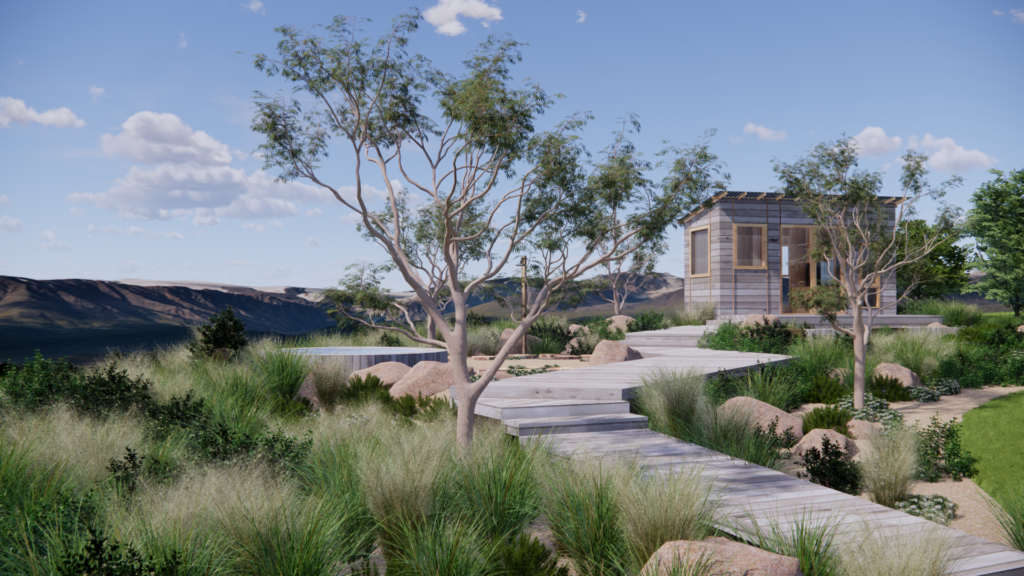
When/How did you get into the industry?
Nadia has twenty-five years of experience in horticulture, environmental consulting and of course landscape design. This truly diverse and complimentary set of skills and knowledge have combined to what is now a leading landscape design consultancy with sustainability, conscious living and creativity at the heart of it. Nadia’s love for Horticulture started at her grandparents property in Eltham, then following High School she studies Horticulture at Melbourne Universities Burnley
What are you most excited about at this year’s #melbflower show?
Coming back for a second year with the most amazing Team – Spaces in Places, Atlas Landscapes, Sanctum Homes, Angus Stewart to name a few…. – At the 2023 Melbourne International Flower & Garden Show, Nadia and her team were awarded the Silver Gilt medal for their garden; “Consciousness”
What is the gardening trend of the season?
I don’t believe there is a particular trend but it sounds like there is going to be a few brilliant show gardens this year the are promoting sustainability and indigenous plants in landscapes – hope this grows an awareness
Who has been the biggest influence on your design career?
Rachael Campbell – Very early on in my career she was my life coach who really encouraged me to dream and believe in myself with starting my own business
If you could invite any three people to a garden party who would they be?
Rachael Campbel – My Old Life Coach
Thomas Woltz – American Landscape Architect
Masego – Jamaican-born, U.S.-bred multi-instrumentalist singer and saxophonist making jazz music cool again
Indoor Plants In The Rain
Have you ever noticed how plants appear greener, cleaner, and lusher after a rain? This is because rainwater provides benefits to plants that tap water cannot.
Make the most of the recent rain by re-energising and refreshing your indoor plants! You can either collect rainwater in a bucket to use later, or you can leave your indoor plants outside for a few hours.
Rainwater Advantages
1. It is abundant in all the right things
Rainwater has more Nitrogen and Oxygen than most tap water, and because your plant roots receive them directly, you’ll notice plants growing faster and greener. Furthermore, rainwater soaking into the soil unlocks micronutrients and minerals that are already present in the soil, which are then quickly taken by the plant roots.
2. Rain is a type of soft water.
Rainwater is free of salts, minerals, and compounds that are commonly present in tap water and once absorbed into the soil, these pollutants can accumulate, altering the pH and destroying important microbe/fungal communities, impacting plant health.
3. The ideal pH
Most plants thrive in soil pH ranges from 5.5 to 7, which is slightly acidic to neutral. Rainwater naturally has a pH of 7 – the optimal pH for plants. Furthermore, rainwater contributes in washing away pollutants in the soil as a result of watering with tap or groundwater, so helping to balance the pH of the soil.
4. Maintain a clean and green environment.
Rainwater wipes away any dust or debris on your indoor plant’s leaves, allowing their pores to clear (Stomata). This increases their ability to absorb CO2 and nutrients for photosynthesis, encouraging healthy plant growth.
Other Alternatives
Don’t worry if rainwater isn’t a possibility where you live. Another fantastic and healthy choice for your indoor plants is dechlorinated tap water.
Simply fill a bucket with tap water and leave it to sit for a few days; the chlorine in regular tap water will gradually evaporate.
Take Precautions
Rain, like all weather, is unpredictable, so you need take certain measures when moving your indoor plant kids outside.
Be on Wind Watch – You don’t want your plant to topple over and harm the pot, or worse, damage the plant’s leaves and stems. If the wind picks up, bring your pot plant indoors and catch rainfall in a bucket.
Not Too Cold – Spring and summer rains are frequently humid enough to be left outside for a short period of time. However, because most indoor plants are tropical, they will not survive being left outside in cooler conditions for an extended period of time. That is why, even on a warm Summer night, we do not advocate keeping your indoor plants outside overnight.
Light is preferable – Heavy rain can harm your prized indoor plant. So, gentle rain is better for your plant to reap all of the benefits while minimising risk.
Riley Cooper: Pocket Profile
Riley Cooper is returning to the 2024 Melbourne International Flower & Garden Show, but this time, in the crowd-favourite Landscape Design Show Gardens Competition!
Riley is a qualified landscape designer and horticulturalist with over 10 years’ experience in the industry. Riley has recently started his own business designing creative, inspired and plant-focused gardens. Riley is passionate about education in the industry and has been teaching the Diploma of Landscape Design for the past few years at Swinburne. He has previously entered the student gardens achievable design section with Angus Houghton-Norris as well as the emergent designers section, and most notably competed in the boutique garden section in 2023 receiving second place. This is Riley’s first time showing a garden in the major show garden category. Teaming up with Landscape construction company Bays edge Landscapes and Abcam Horticulture to build and install the design.
2024 Show Garden Profile
Gratus represents gratitude, a place to thank the people who came before us and who matter today. As a society we can take things for granted, and this garden is about celebrating the quiet achievers in our lives. The teachers, the carers, the workers – anyone who may be overlooked or forgotten in the hustle and bustle of our daily lives. Gratus beckons us to stop, pause, and take a moment to appreciate everything we have in the now. It’s a gathering space to take the time to care for one another and reflect on the community we share. The spa is inspired by the roman baths, designed as a lowered space to sit and converse. Likewise, the central dining area is an open table accessible on all sides to symbolise the coming together as a group from all corners of the garden. The winding garden paths acknowledge that we don’t all walk the same path, but we can all still end up in the same central point together.
The garden itself is a fusion of order and chaos, there are strong angular lines as well as dynamic plant choices. The materiality of the garden is grounded with strong natural cypress timber and soft limestone paving. So often we try to tame and control our gardens, but this is an embrace of the beauty of organised chaos. We can sit back and reflect on the natural beauty without having to make sense of everything around us.
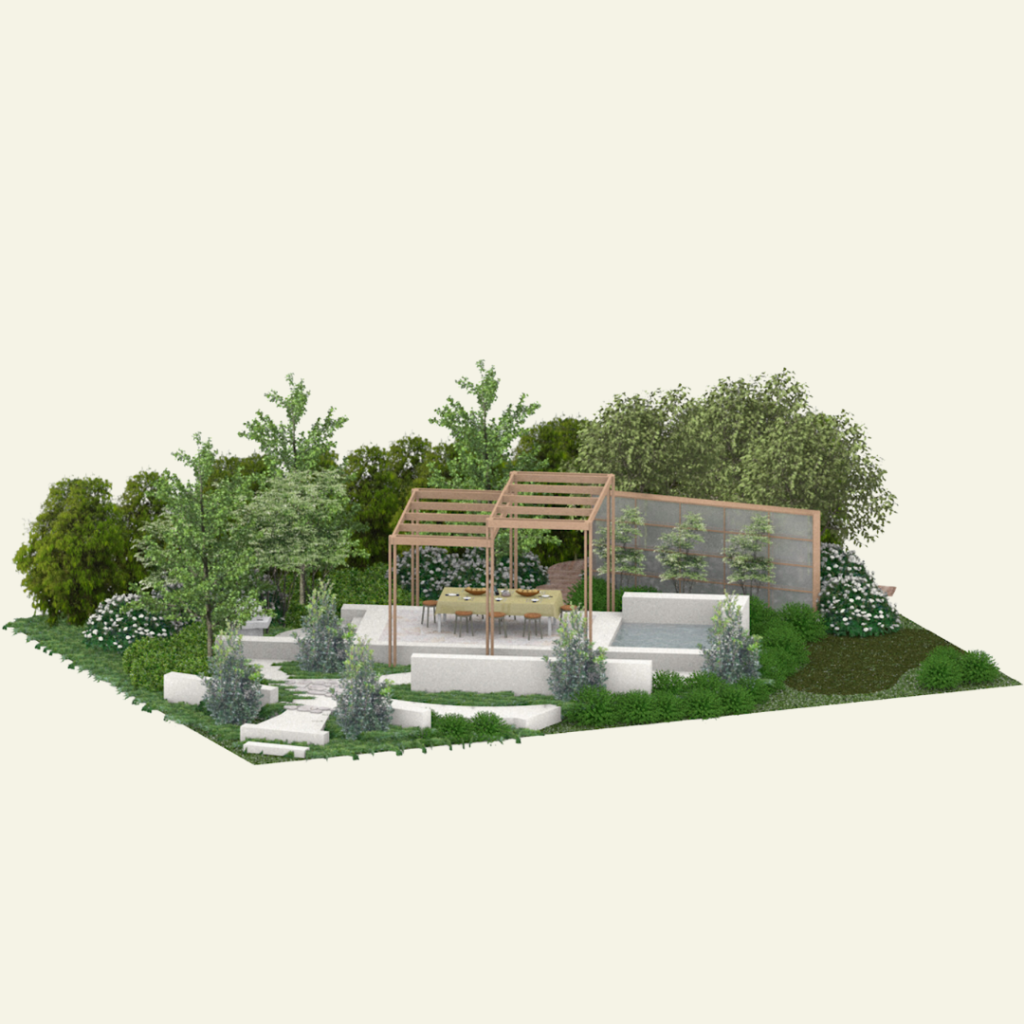
When/How did you get into the industry?
Over 10 years ago as a career change after studying Science (Chemistry), I fell in love with unique plants and gardens. Worked as a landscape gardener then studied design and horticulture diplomas
What are you most excited about at this year’s #melbflowershow?
The student achievable gardens, I know how much work goes into those gardens. Such creative designs that always look astounding
What is the gardening trend of the season?
The unusual, particularly bold plants with unique foliage
Who has been the biggest influence on your design career?
Too many to name just one, in terms of inspiration I would say designers Tom Stuart-Smith, Ula Maria and Daniel Nolan to name a few.
If you could invite any three people to a garden party who would they be?
At the risk of sounding corny, My Mum, Dad and my wife. Gardens are my happy place and I enjoy their company the most
THE HIDDEN BENEFITS THAT YOU DIDN’T KNOW INDOOR PLANTS HAD
It is no secret that indoor plants have steadily grown into one of the hottest home decor trends with an abundance of new Aussie plant parents. Not only are indoor plants easy to take care of, they have many practical health benefits that you may not know about.
While indoor plants look fantastic in the home, many of us don’t think about the benefits that these plant-babies actually have on our lifestyles. Indoor plants can improve air quality, increase overall well-being and even soothe anxiety making plants a wonderful addition to your home.
Removing toxins from the air: A spider plant is great for removing formaldehyde, carbon monoxide and other toxic air impurities from your home. These toxins are more common than you’d think and can be found in household items like paper bags, tissues, napkins and synthetic fabrics. The spider plant is able to grow in any type of soil and only requires the occasional water, meaning they are easy to maintain! Remember to keep them out of direct sunlight and your plant will continue to flourish!
Use as a healing ointment: Chances are you’ve probably used some form of aloe vera before, whether it was for sunburn, cold sores, frostbite or psoriasis. Aloe vera has been used worldwide for thousands of years to heal common illnesses. To give your aloe vera the best chance of survival, invest in a liquid fertliser such as the new Osmocote Pour+Feed. This will ensure your plant gets all the nutrients it needs to be healthy. Aloe vera plants should be placed under indirect sunlight and watered around every three weeks once the soil becomes semi-dry.
Improve indoor air quality: If you are looking for a plant that will improve the air quality within the bedroom, snake plants are an essential addition. Whilst this plant will remove the toxins from any room in the home, they work best in the bedroom as they do most of their work at night. While you sleep, this particular plant works hard to convert the carbon dioxide into oxygen meaning you will receive a better night’s sleep. The snake plant is a considerably easy plant to look after and tends to grow better when the soil dries out between watering.
Soothes anxiety: Known for its enticing smell and calming properties, lavender is a plant that everyone should have in the home. Lavender plants work best in bedrooms as its soothing properties may help those who suffer from anxiety, restlessness and insomnia. Lavender plants like to absorb moisture from a small but rich amount of soil with lots of sunlight. For best results, plant your lavender in a shallow pot with a premium quality potting mix with the Australian Standard Red tick, which ensures that the mix has been manufactured to comply with Australian Standards and place close to a sunny window. This will ensure your lavender gets a good balance between holding moisture and draining well plus all the essential nutrients for healthy growth.
Improve concentration and memory: Rosemary has been used in folk medicine for centuries to help improve concentration and memory. Whilst it is usually kept in the kitchen for cooking, you should place rosemary plants around your home in places that you might need a mental boost, like an office or study.
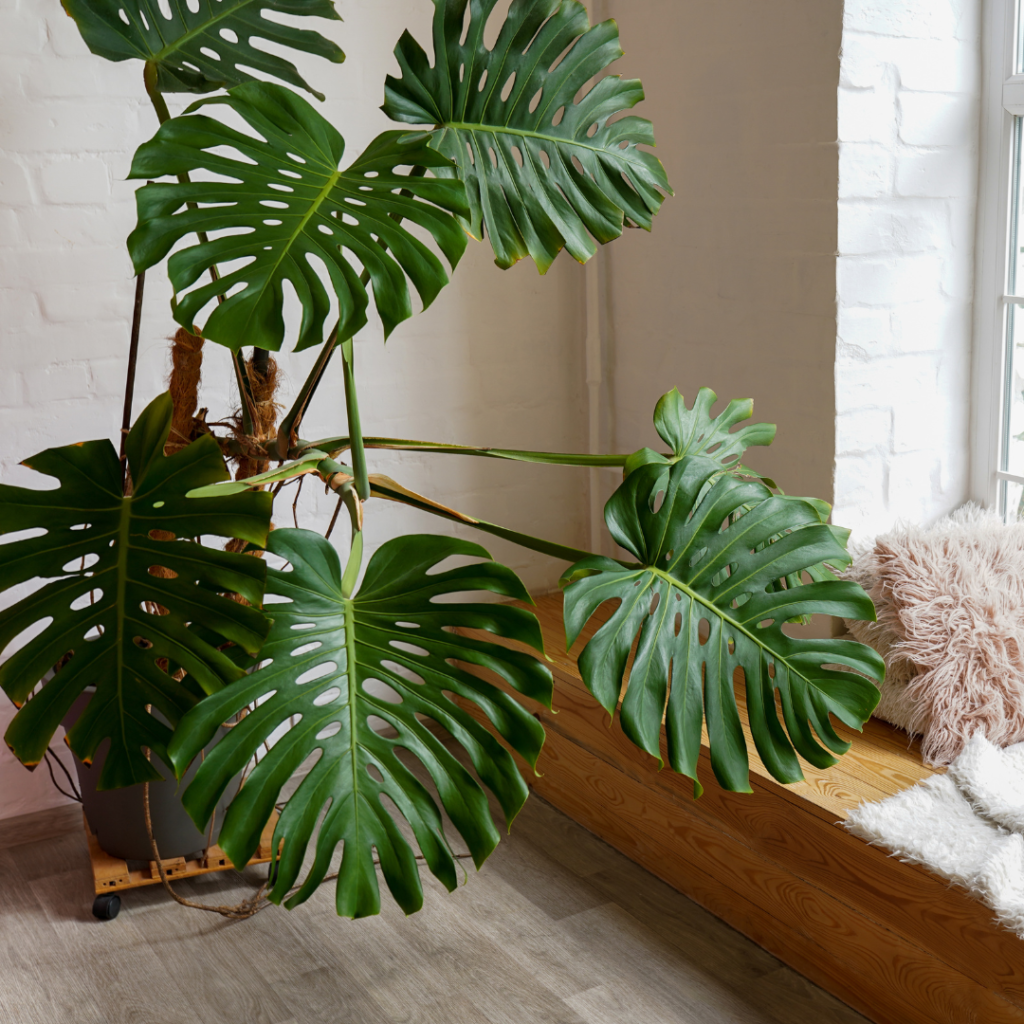
Get Involved: Floral Competitions
Calling all emerging florists, established floral designers and floral artists to showcase your creativity and talent at the Melbourne International Flower & Garden Show, Presented By Scott’s.
Join us in celebrating the artistry of nature with our new competition the Natio Botanical Moments Floral Design Competition – exploring and elevating the traditional skill set of floristry to celebrate the ever evolving floral installation trends.
Looking to go to the next level Blooms Unleashed – the Hanging Installation is for you. We invite floral artists nation-wide to push the boundaries of creativity and design and transform a structure into a large scale hanging installation that creates a “Wow Factor”.
In the spirit of fostering a deeper connection with nature, our Open Floral Competition returns not only celebrating the beauty of blooms but also emphasizes minimal environmental impact.
Looking to create a bold floral installation to display in the Great Hall of Flowers? Join the best local & international floral designers as they showcase their artistry and compete to take home the prestigious Gold Floral Design Award.
If you would like to express your interest in competing in the 2024 Floral Competitions & Displays please complete the EOI form, to apply and for more information click HERE
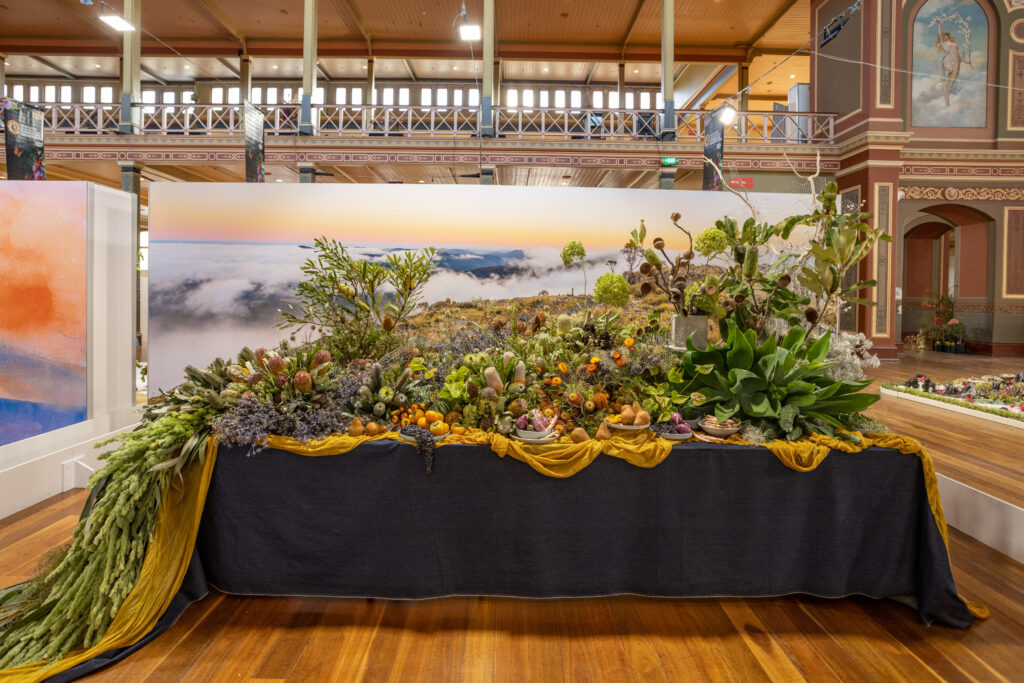
TOP FIVE ESSENTIAL TIPS FOR THRIVING ROSES
A common misconception about roses is that they are difficult to grow and care for. Despite being a universally admired flower, roses have garnered a reputation as being fussy, especially by those who have not had much success growing them.
Roses are actually one of the easiest flowers to grow in your backyard and are so resilient they can even survive drought. The most common mistake people make with them is not knowing the secrets such as when to feed and prune them, as well as what their optimal growing conditions are.
Plant them in the sunlight: While roses can grow well in filtered light, both the quantity and quality of the flowers may be reduced. To avoid this, make sure to plant your roses in a position where they receive at least six to eight hours of sunlight each day. Remember to protect roses with some shade from the midday sun during summer to avoid wilting and the scorching of leaves and flowers.
Fertilise regularly: Roses that are fertilised regularly not only maintain their growth and continue to flower strongly, they are also better able to withstand pests and disease. Apply a controlled release fertiliser every few months.
Use bleach or antiseptic when pruning: When pruning roses, dip the blades of your secateurs and pruning saw in a weak solution of household bleach or antiseptic between plants to prevent the spread of diseases from unhealthy to healthy bushes. Cut back the healthy stems from last season by one third and make your cut just above an outward pointing bud or node. You can also cut off spent flowers during peak flowering times to encourage more flowers to grow.
Use a compost mix when planting bare-rooted roses: Bare-rooted roses usually have their roots encased in damp sawdust and plastic to stop them from drying out. Once you take your new rose home, it is important to make sure that you plant it as soon as possible and keep the roots moist. Prepare a planting hole that will comfortably hold the roots and add a compost mix that contains natural bio-stimulants, such as Scotts Osmocote Premium Compost, to the base of the hole.
Give your roses regular deep watering: Once roses are established they are able to tolerate periods of dryness well. However, roses do need regular deep watering for the first year after planting. This ensures that when the conditions are right, the controlled release fertiliser you’ve applied will release its nutrients to the roots. Water your roses twice per week over spring and summer, making sure that the soil is soaked to a reasonable depth.






















